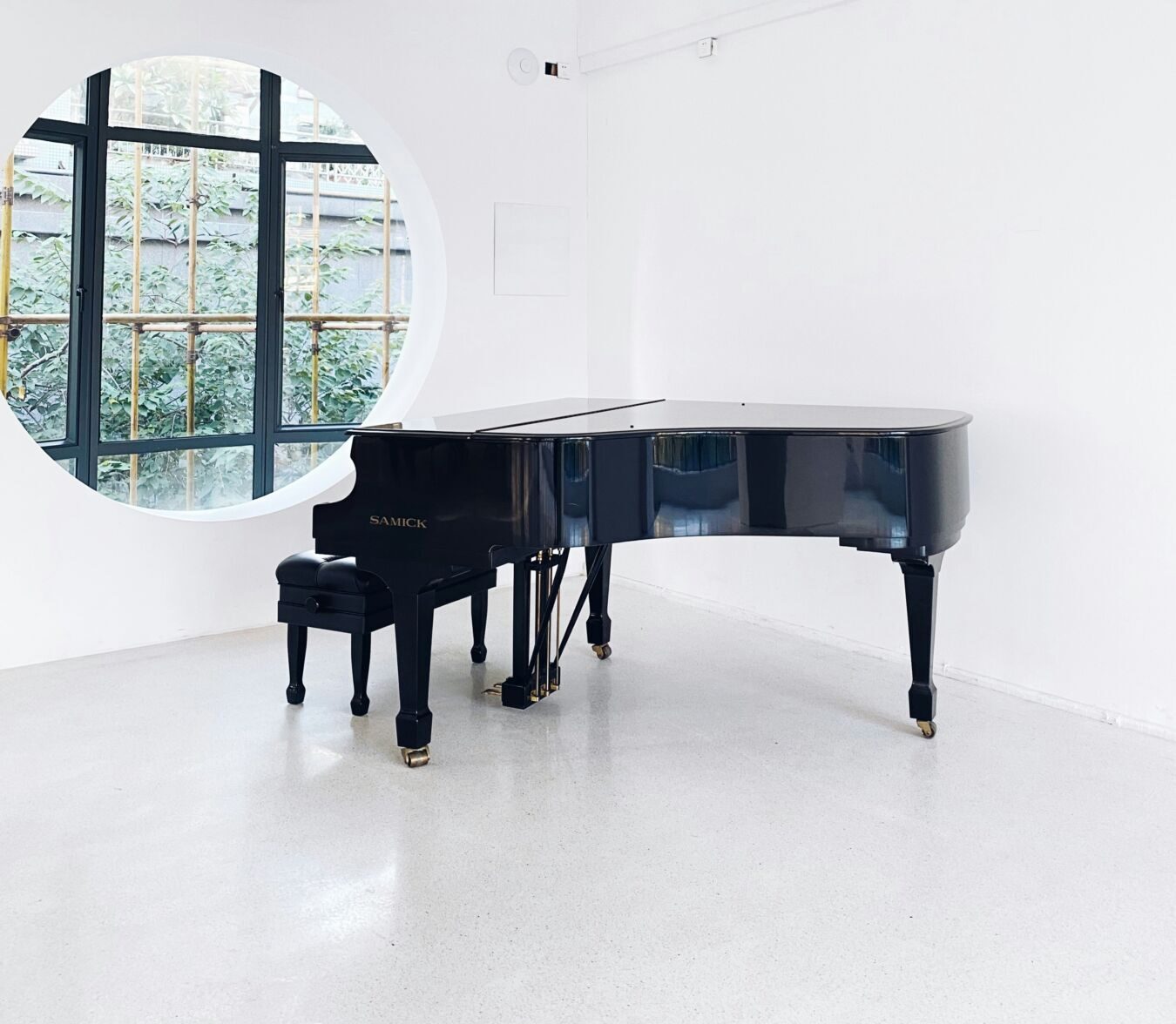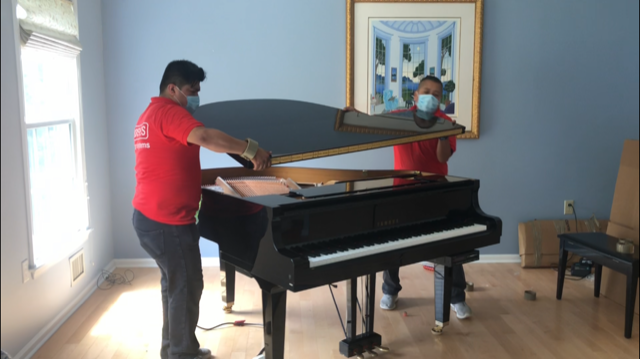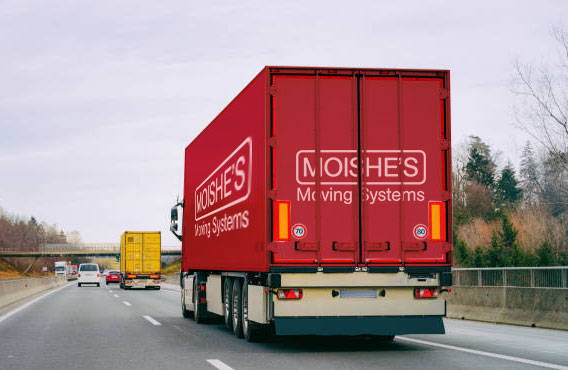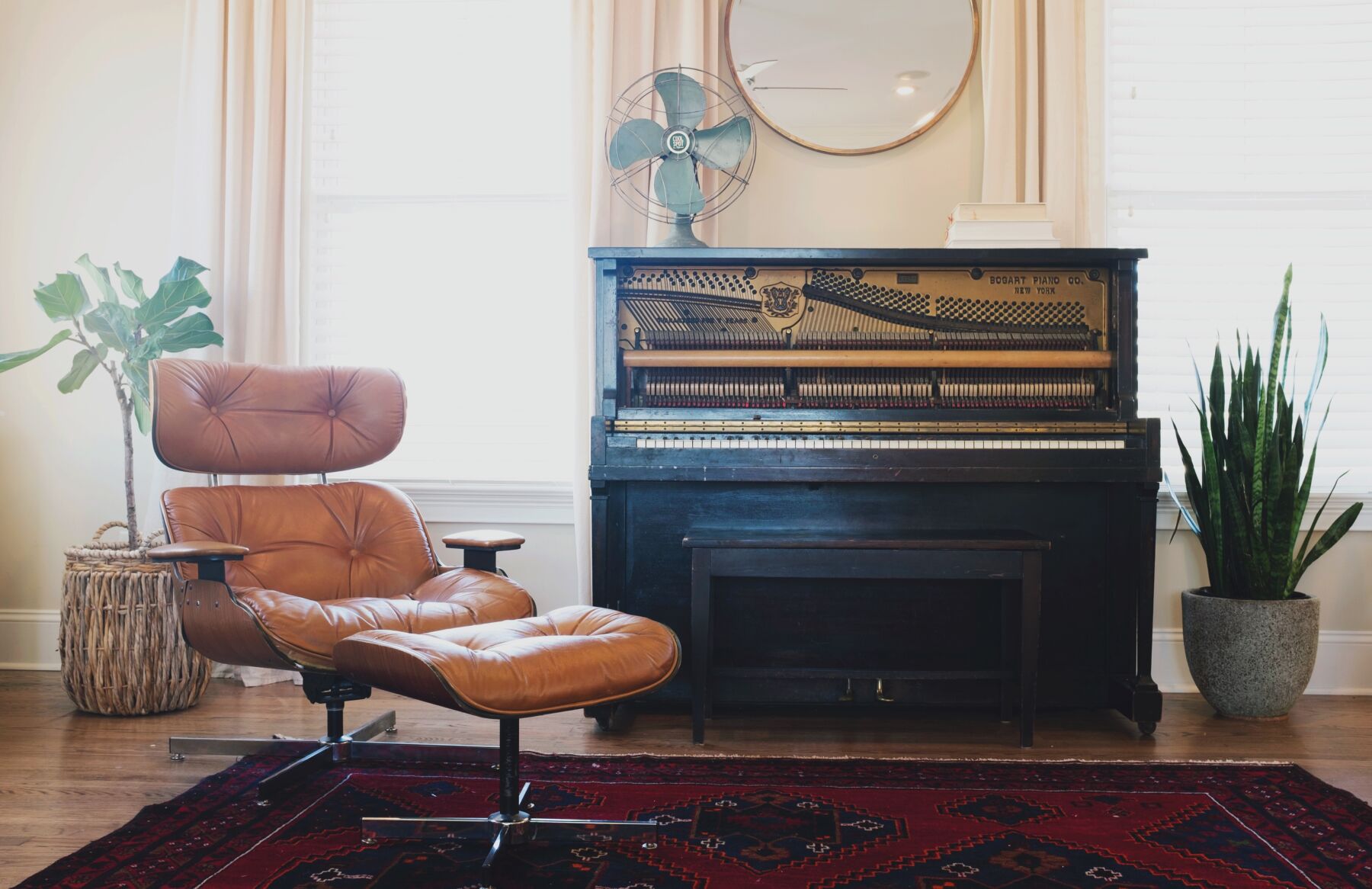Moving, especially in bustling cities like New York, can be a daunting task. And when it comes to transporting delicate items like pianos, stress levels can skyrocket. At Moishe’s Moving Systems, we have plenty of experience in piano moving, and offer reliable solutions for those looking for a stress-free and efficient service.
In this guide, we’ll walk you through the intricacies of moving a piano safely, whether you choose to do it yourself or hire the experts. We’ll delve into the step-by-step process, and answer all the important questions about how to transport a piano.

Evaluating Your Piano Moving Options
When faced with the task of relocating a piano, individuals often grapple with the decision of whether to do it themselves, or hire the services of professional movers. This is an important decision, as pianos are delicate instruments that require careful handling to prevent damage.
You might also be thinking ‘how much does it cost to move a piano?’ Moving a piano yourself can be a cost-effective option, but it comes with inherent risks. The weight and size of pianos make them challenging to maneuver, and improper handling can lead to injury to yourself or structural damage to the piano.
The Benefits of Expert Piano Moving Services
On the other hand, hiring a professional piano mover offers several advantages.
Expert piano movers possess the knowledge and equipment on how to safely move a piano, minimizing the risk of damage. While the cost is higher than a DIY approach, the peace of mind and assurance of a secure move are invaluable. You will be guided through weighing the pros and cons of each option, considering factors such as the piano’s size, distance of the move, and personal expertise.
Making an informed decision based on these considerations will ensure the piano reaches its destination unscathed.
Should You Move the Piano Yourself or Hire Professional Movers?
When faced with the prospect of moving a piano, the first decision to make is whether to tackle the task yourself or enlist the help of professional movers. Moving a piano yourself may seem like a cost-effective option, but it comes with its own set of challenges.
Considerations for DIY Piano Moving
Moving a piano yourself involves careful planning. Consider the size of the piano, the distance it needs to travel, and the expertise required. Remember, how many people it takes to move a piano can directly impact the safety of the instrument and the movers. Moving companies generally need at least 3 men to move an upright piano and 4-5 men to move a baby grand piano
Advantages of Hiring Professional Piano Movers
Hiring professionals like Moishe’s Moving Systems brings peace of mind… which is priceless! We have the experience and tools necessary for a seamless move, alleviating the stress associated with moving such a delicate and valuable item. Discover how much it costs to move a piano by obtaining a quote, and weigh that against the benefits of avoiding potential damages.

Preparing for the Piano Move
Ensuring a successful piano move begins with meticulous preparation. This section details the steps to take before the actual move, from assessing the piano and moving environment to gathering the necessary supplies and enlisting help.
Assess the Piano and Moving Environment
Before making any moves, evaluate the piano and the surroundings. This step helps in determining if any special equipment or precautions are necessary. Understanding how to move a piano up stairs or how to move a piano down stairs is crucial for a smooth transition, and understanding how much is a piano move.
Gather Essential Supplies
The right tools and supplies are essential for a successful piano move. Make a checklist of items needed for disassembling, packing, and reassembling the piano. This is also the time to consider the piano moving cost and how it aligns with your budget.
Enlist Help and Schedule a Moving Date
Moving a piano is not a one-person job. Communicate clearly about the moving date and ensure everyone is on the same page. Professional movers, like Moishe’s, can offer flexibility to suit your schedule. It’s important to enlist reliable help and emphasize the significance of choosing an appropriate moving date, considering factors like weather and traffic. It provides practical tips on assembling a capable moving team and coordinating schedules for a seamless relocation process.

Moving the Piano
Executing a successful piano move involves a series of careful steps. This section guides readers through the process, from disassembling and protecting the piano to lifting, carrying, reassembling, and placing it in its new location.
Disassembling and Protecting the Piano
Follow a systematic approach to disassemble the piano, ensuring all parts are adequately protected. Quality moving supplies and boxes are a must for smaller parts. Utilize proper padding and blankets to safeguard against scratches and impacts. This step is particularly important when considering how to move a grand piano or how to move a baby grand piano due to its size and fragility.
Lifting and Carrying the Piano
Understanding the correct lifting techniques is paramount. Distribute weight evenly and use proper lifting straps to avoid injury. If you’re contemplating how to move a piano long distance or how to move a piano across the country, ensure your chosen method is sustainable for the entire journey.
Reassembling and Placing the Piano
Once the piano reaches its destination, proper reassembly is key. Refer to any notes or photographs taken during the disassembly process. Place the piano in its designated spot, considering factors like temperature and humidity.
Top Tips for a Stress-Free Piano Moving Experience
To ensure a stress-free local moving or long-distance moving experience, follow these tips:
Hiring Professional Movers for Peace of Mind:
One of the top tips for a stress-free piano moving experience is to enlist the services of professional movers, like Moishe’s. Experienced piano movers possess the necessary skills and equipment to handle the delicate instruments like pianos, ensuring a smooth and damage-free relocation. Entrusting this specialized task to professionals not only provides peace of mind but also safeguards against potential mishaps that could occur with inexperienced handlers when moving in NYC.
Choosing the Right Moving Date and Time:
Selecting the appropriate moving date and time can significantly contribute to a stress-free piano move. Opt for a time when traffic is minimal, reducing the risk of delays and complications. Additionally, consider how factors like weather conditions might impact the move. A well-timed relocation minimizes external stressors, creating a more controlled environment for the piano transportation process.
Clear Communication with Movers and Team Members:
Clear communication is important in ensuring a smooth piano moving experience. Establish open lines of communication with both the professional movers and any team members involved in the process. Provide clear instructions regarding the piano’s specifications, any potential obstacles at the pickup and drop-off locations, and any specific requirements. Effective communication helps prevent misunderstandings and fosters a collaborative and stress-free moving atmosphere.
Obtaining Insurance Coverage for Potential Damages:
To lower the stress associated with potential damages during a move, it’s crucial to obtain insurance coverage. Confer with your moving company about their insurance options and choose a plan that adequately protects your piano and other belongings. Knowing that you have coverage in case of unforeseen incidents provides an additional layer of reassurance throughout the moving process.
Packing and Protecting Other Belongings Securely:
Beyond the piano itself, ensuring the secure packing and protection of other belongings is essential for a stress-free move. Use appropriate packing materials to safeguard items from damage during transportation. Clearly label boxes and fragile items, providing clear instructions to the movers. Taking these precautions not only safeguards your possessions but also contributes to an organized and stress-free moving experience.

Moishe’s Moving Systems: Your Trusted Piano Movers in NYC
As a seasoned player in the moving industry, Moishe’s Moving Systems comes as a reliable solution for piano moving in NYC. We have expertise in handling delicate items like pianos, ensuring safety, and minimizing the risk of damage.
Contact us today for an obligation free quote for piano moving.
Frequently Asked Questions
Can you lay a piano down to transport it?
While it’s possible to lay an upright piano down for transport, it’s generally not recommended as it can cause damage to its internal components. If necessary, proceed with caution by removing detachable parts, wrapping the piano in blankets, and using a dolly and straps. Grand pianos should always remain upright. For safe transport, hiring professional movers experienced in handling pianos is best.
How do you move a piano without a mover?
Moving a piano without professional help requires planning and proper equipment like a dolly, straps, and moving blankets. First, remove detachable parts such as the keyboard cover and pedals, then wrap the piano securely to prevent damage. Use a dolly to lift the piano, ensuring the weight is evenly distributed. Have three to four people to assist with maneuvering, especially through tight spaces. If using a truck, pick one with a ramp or liftgate, and secure the piano with straps to prevent movement. A piano board can add stability. Take your time to ensure safety and avoid damage.
Why is it hard to move a piano?
Moving a piano is difficult due to its size, weight, and delicate internal components. Pianos are bulky, making them hard to maneuver through tight spaces, and they have few secure handholds, increasing the risk of damage. The sensitive internal parts can be easily misaligned or damaged. Proper weight distribution is also key to avoid tipping, which can damage both the piano and the surrounding area. Using equipment like a piano dolly and enlisting experienced movers helps ensure a safer move.
Do you need a dolly to move a piano?
A dolly is highly recommended for moving a piano because it provides stability and helps evenly distribute the piano’s weight. It simplifies transport over different surfaces and reduces the risk of damage to the piano and floors. While possible without a dolly, moving a piano would be much harder and riskier. For grand pianos, a dolly is particularly useful, but you still need to secure parts like the pedals and wrap the piano for protection.
How to move a piano with no wheels?
Moving a piano without wheels requires extra caution. Start by removing detachable parts to lighten the load and wrap the piano in blankets to protect it. Use moving straps to lift and maneuver the piano, ensuring the weight is evenly distributed. Have at least three to four people assist, moving slowly through tight spaces. For stairs, consider a stair dolly or additional help. Moving pads and straps will help increase safety and minimize damage to the piano and surroundings.
